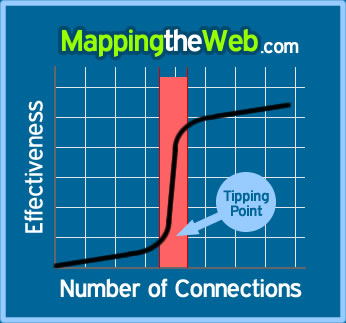 Amidst the new web landscape, YouTube is a well-known success story. They’ve been able to generate millions upon millions of video views per day. Aggregating the eyeballs has not been the problem thusfar. But in order to truly classify this start-up as a true success, substantial revenues need to be realized, as a considerable ROI is the end goal.
Amidst the new web landscape, YouTube is a well-known success story. They’ve been able to generate millions upon millions of video views per day. Aggregating the eyeballs has not been the problem thusfar. But in order to truly classify this start-up as a true success, substantial revenues need to be realized, as a considerable ROI is the end goal.
Much talk seems to keep surfacing around how YouTube plans to monetize its collossal traffic. Advertising is always an option, albeit not always the most appropriate or suitable.
There are six basic Internet revenue models. Let’s explore how YouTube could leverage any or all of them…
Advertising: This is the most obvious and widely-accepted model. Nevertheless, within this category, there are several sub-categories, including text ads and video ads. Up until now, YouTube has only opted for text ads. But pre-roll, post-roll, or interstitial video ads may be right around the corner. Many video sites already display these ads, so it’s nothing new or extraordinary. YouTube may be hesitant as they don’t want to ruin the user experience that they’ve come to be known for. Moreover, YouTube could implement an e-mail ad campaign, whereby sponsored/ad-supported e-mails are mailed out to users on a daily, weekly, or monthly basis.
Subscription: The video giant could force users to pay a small monthly fee to access certain parts of the site, or perhaps high-quality content. The subscription would eliminate ads and provide better streaming quality. It is not my belief that the entire site should be subjected to a subscription-based model, as this would cause a user back-lash. But by providing premium features at a small cost, this may prove to be a lucrative revenue stream.
Affiliate: This category is somewhat similar to advertising, but focused more on CPA (cost-per-action). In other words, YouTube only benefits when a user buys or pays for the given service displayed on the side of the page. Pay-outs are much better than CPMs or CPCs, but less frequent. If YouTube can quantify and justify a case for an affiliate program, then it may be something to explore. My only concern is that the affiliate products closely reflect the content of the video being viewed. That way, the user experience remains optimal and the targeted affiliate link may be more likely to incite a user click-through.
Content: YouTube could undertake an endeavour similar to the Google Video strategy. In order words, users upload their videos and smack a price on them. If people download them and they sell, the user gets paid out and YouTube receives a commission on the sale. Think of iTunes for user-generated video content.
Product Sales: The idea of tangible product sales may seem hard to fathom at first. In any case, YouTube could make a big push to sell ‘everything YouTube’. They could sell branded T-shirts, mugs, hats, pens, or just about anything. Although this may not be the most sexy angle to choose, it’s a very low-risk, low-cost approach to business. As is the case with many of these Internet revenue models, many could be chosen and incorporated if executed properly.
Directory Services: The start-up could charge video directors/producers, singers, models, actors, etc… a small fee per video to appear in a coveted video directory. This designated area could be access by Hollywood directors, business executives, and talent scouts to identify possible talent and/or ‘The Next Big Thing’.
BONUS…
Oddball: The video powerhouse could sell or license the rights to its name. Then, a major TV network could use the label to launch a new reality show. For example, CBS or NBC could launch ‘YouTube Weekly’ - a look at the week in video, or better yet, the top UGC videos on the site. They could even incorporate an interactive component via online voting or the ability for users to choose the clips and programming they want to see - similar to CurrentTV.
Another oddball idea that YouTube already incorporates, to some extent, is paid product placement. This type of strategy bodes well with movie studios and products of a viral nature. These paid placements could be displayed on the homepage, category pages, or site-wide. The advertising company benefits from product/service exposure and YouTube benefits from a CPM standpoint or on a per-campaign basis. However, disclosure is extremely important and must be displayed in a prominent manner.
So as you can see, YouTube has more options than people care to imagine or consider. My guess is that the company will NOT choose one of the above, but rather a multitide. If incorporated in a seamless manner, revenue may soon be a far-gone problem for the company.
